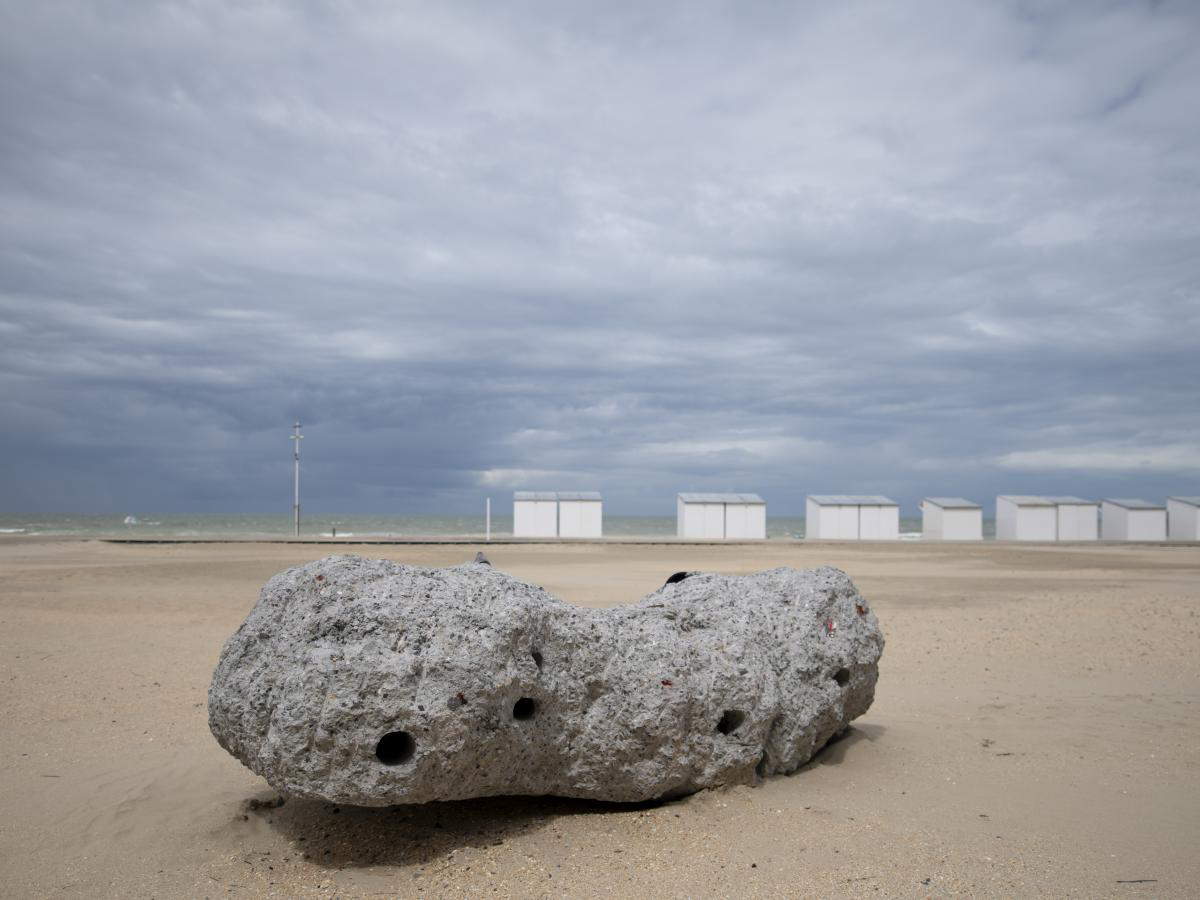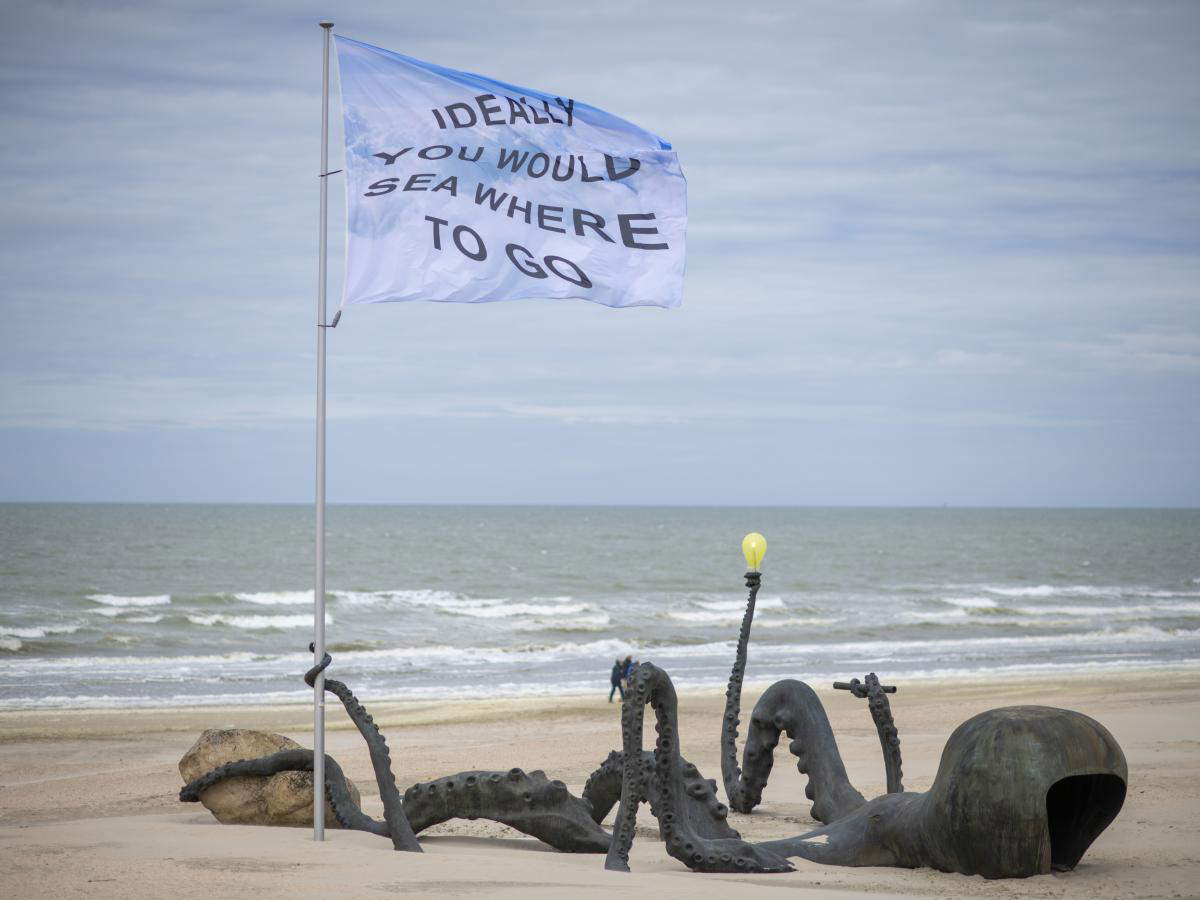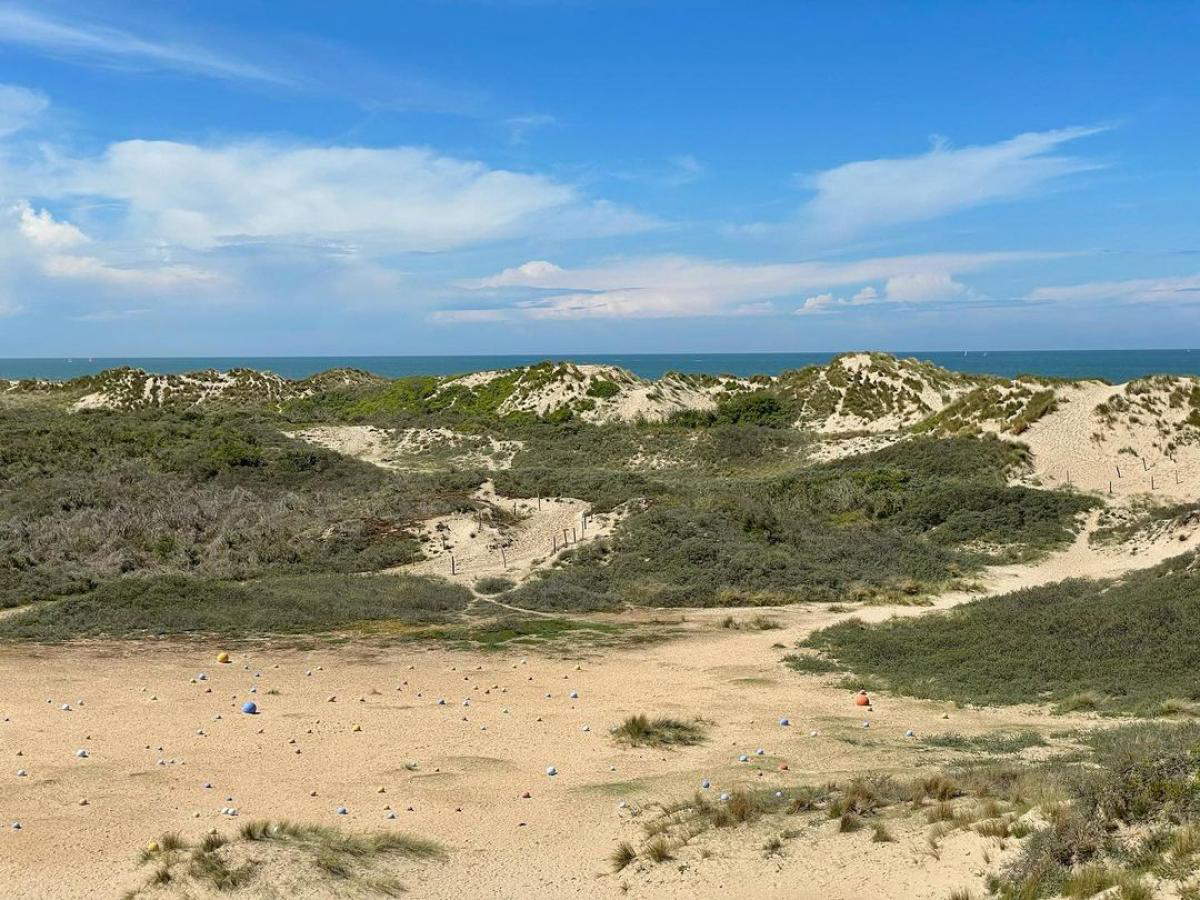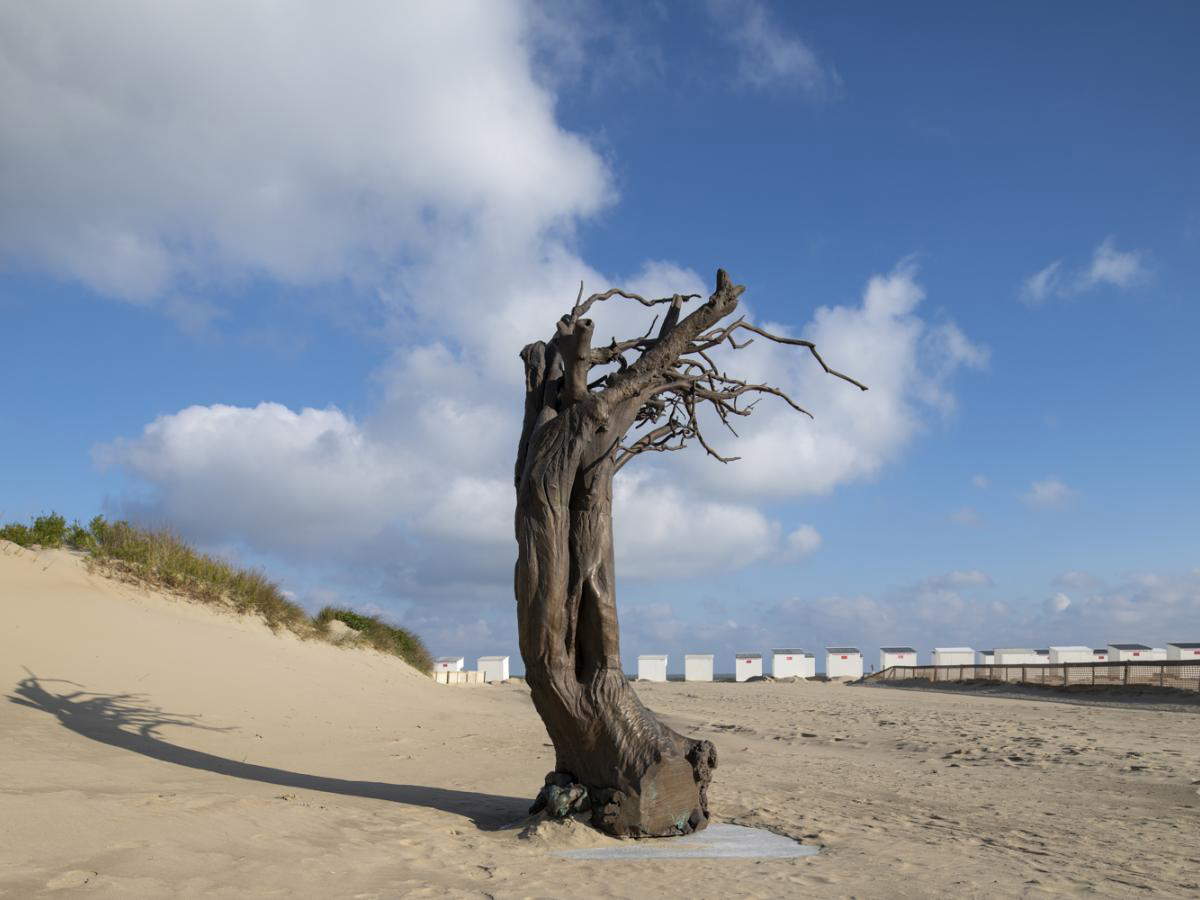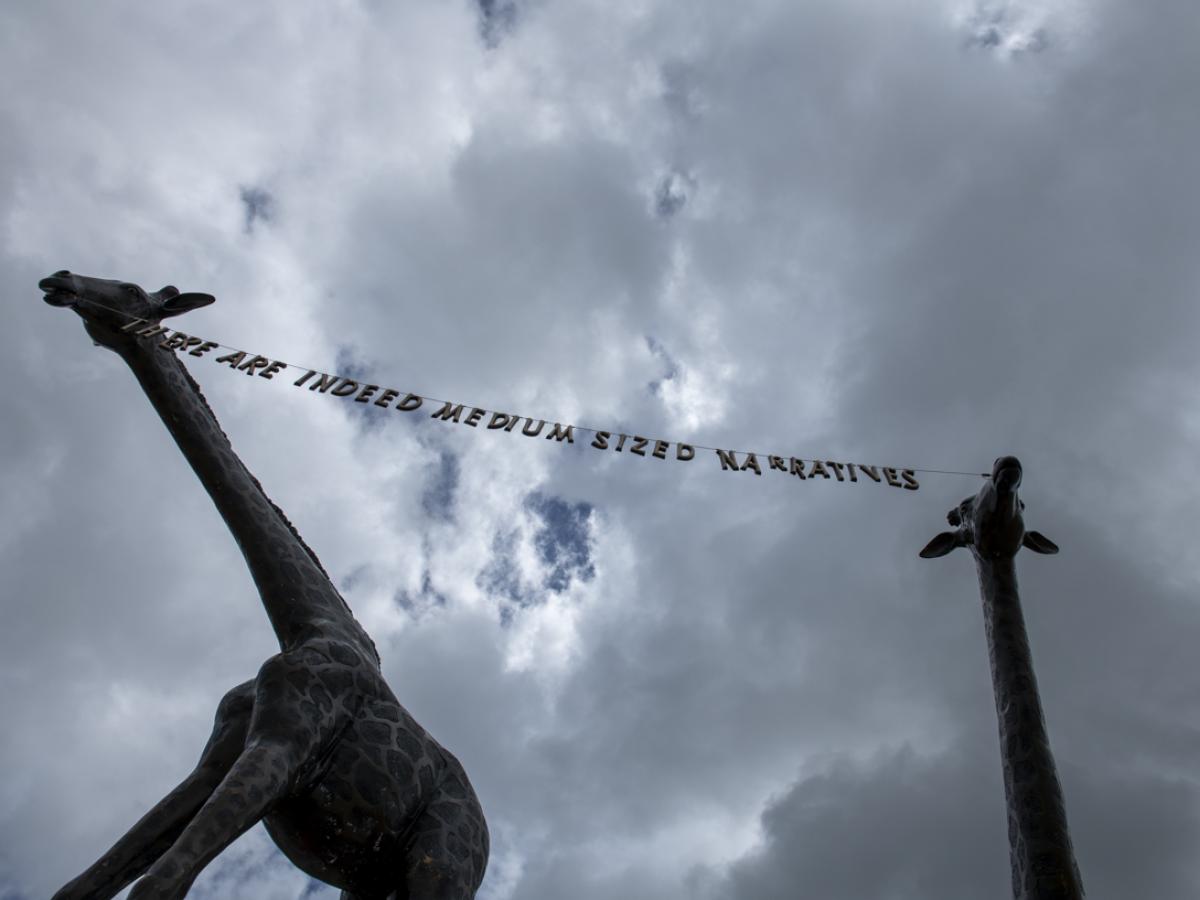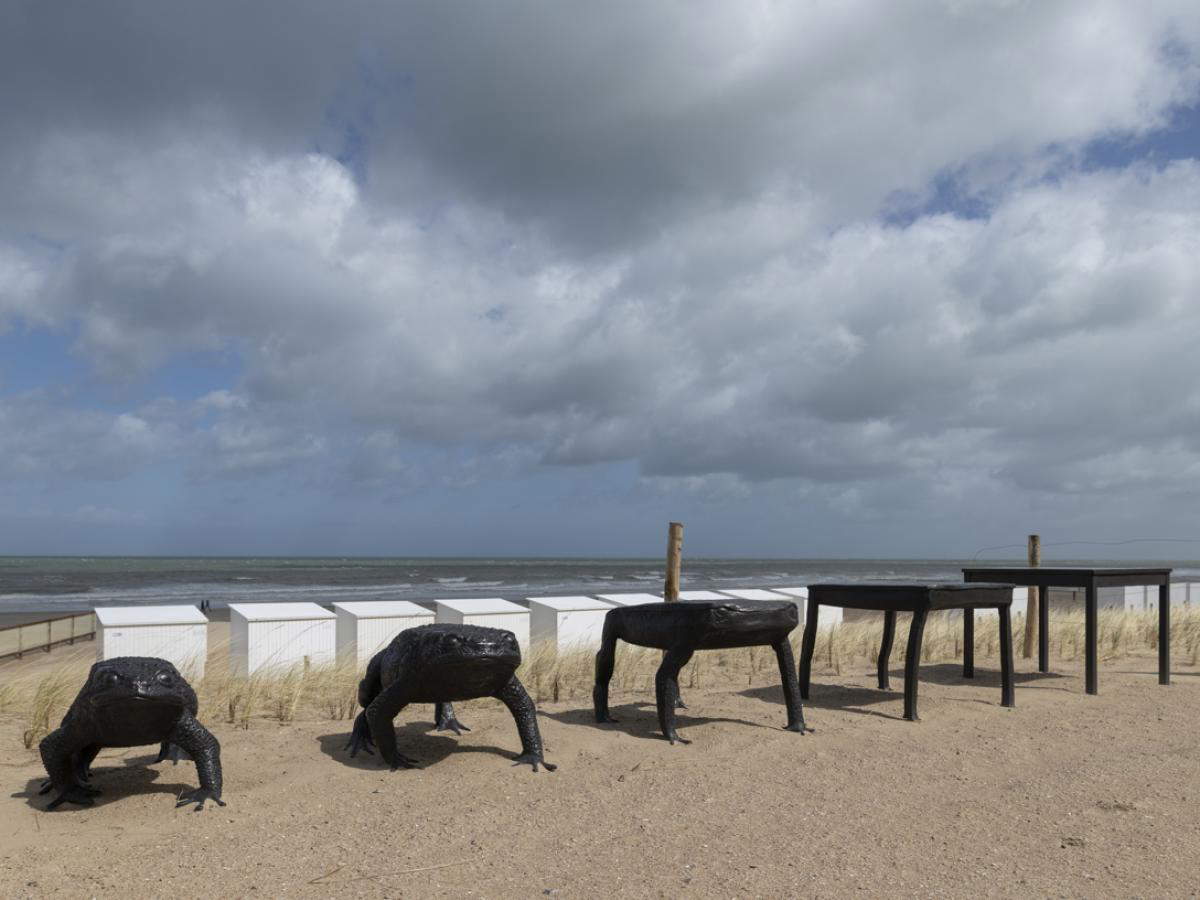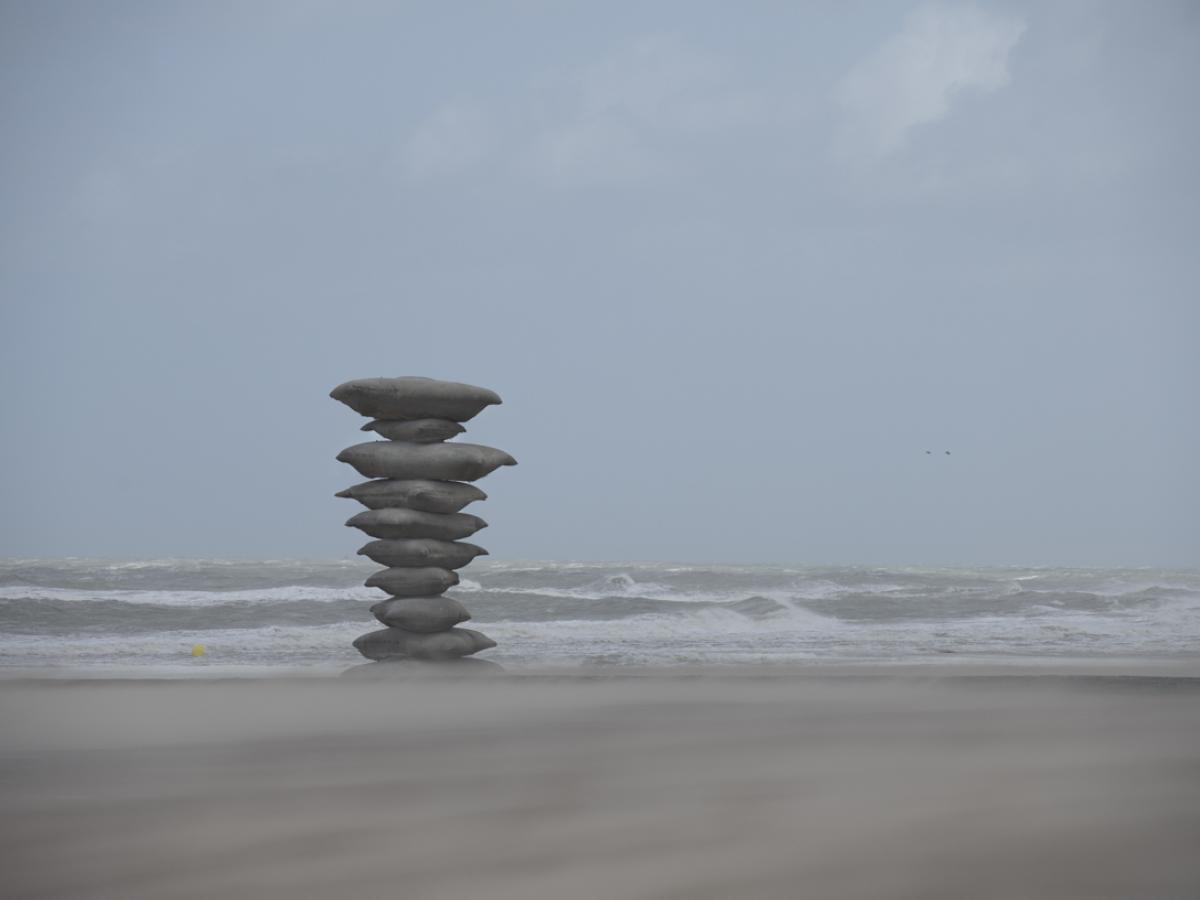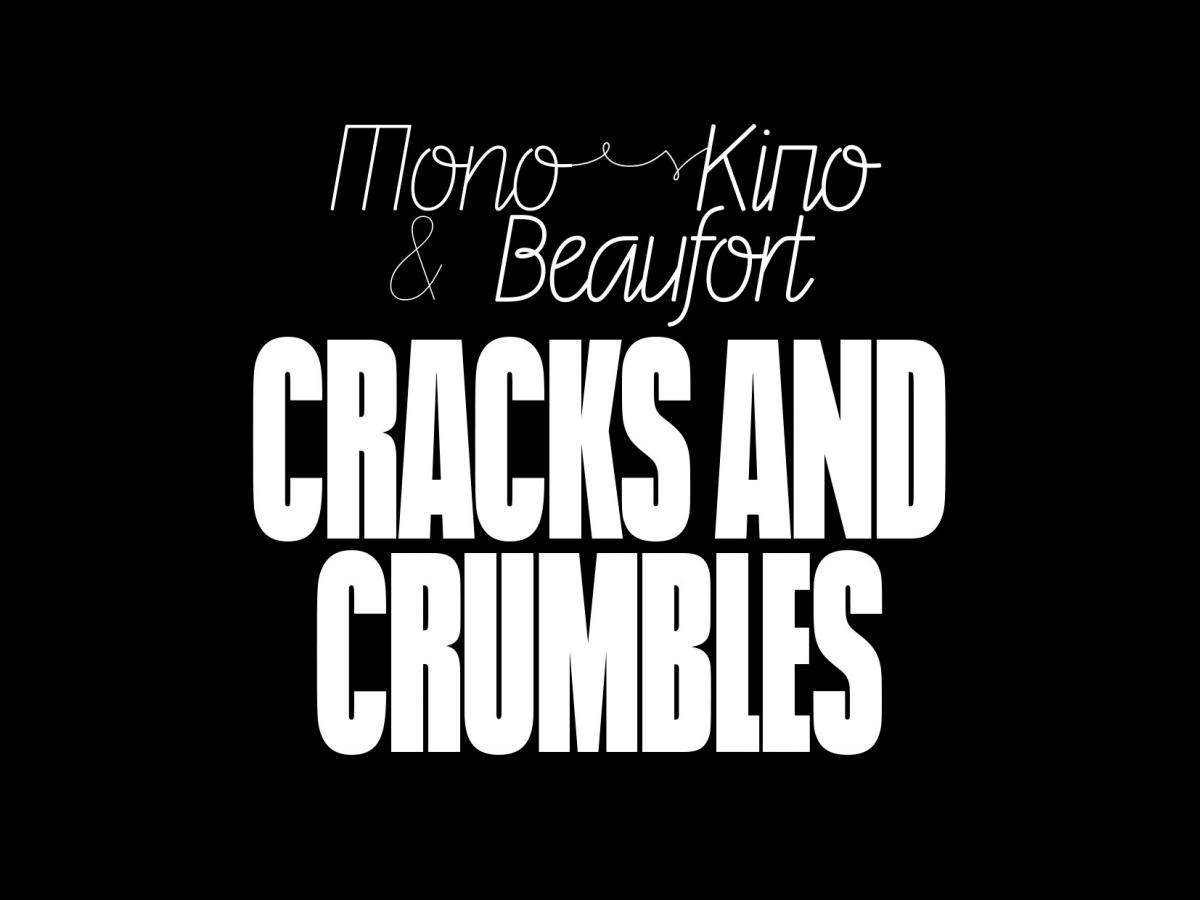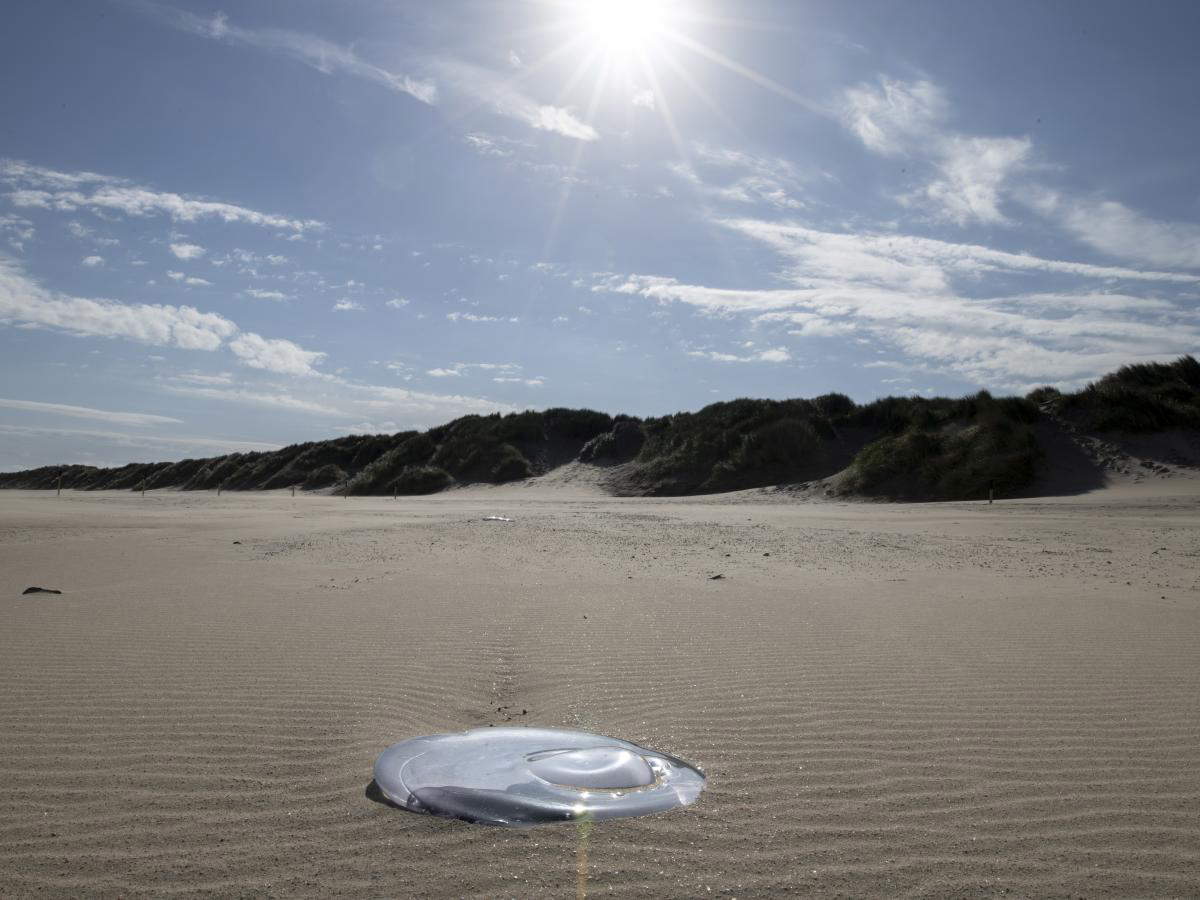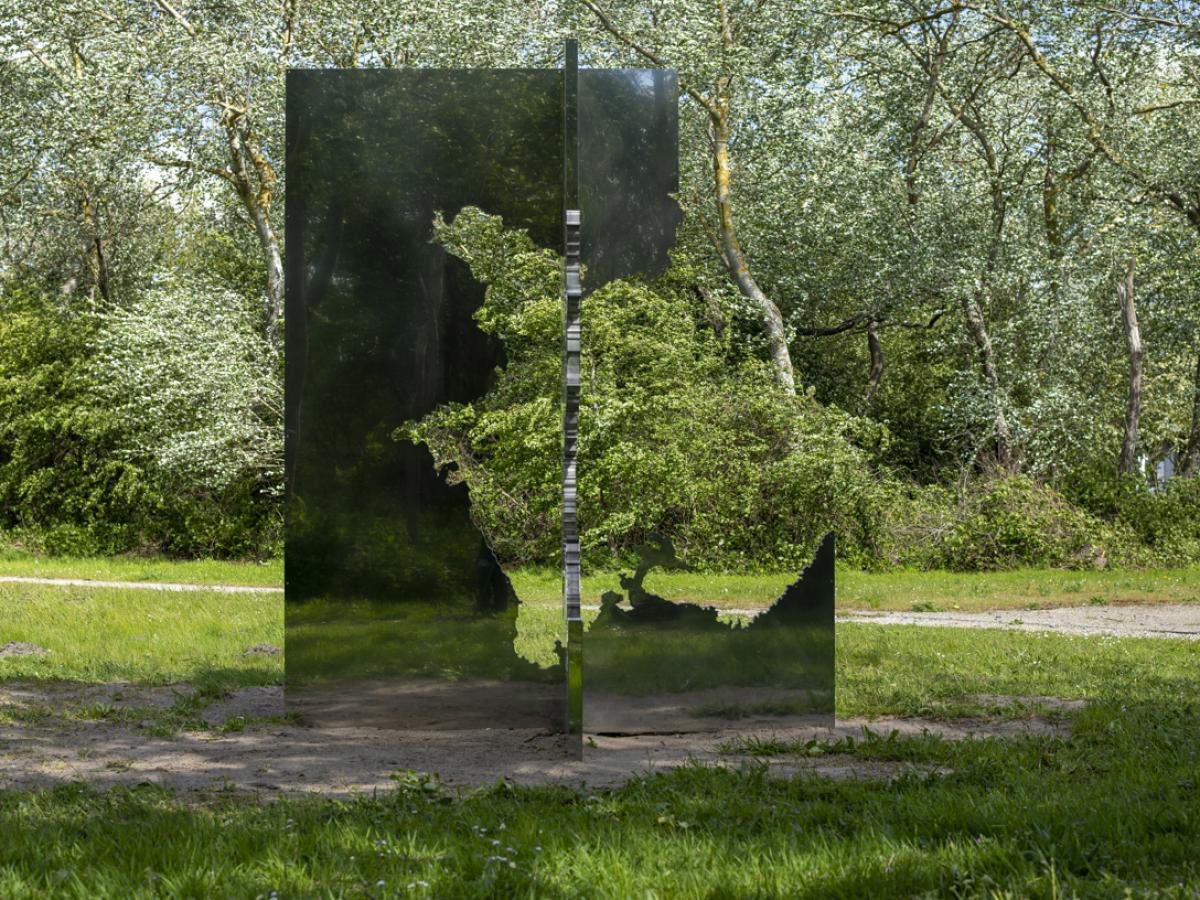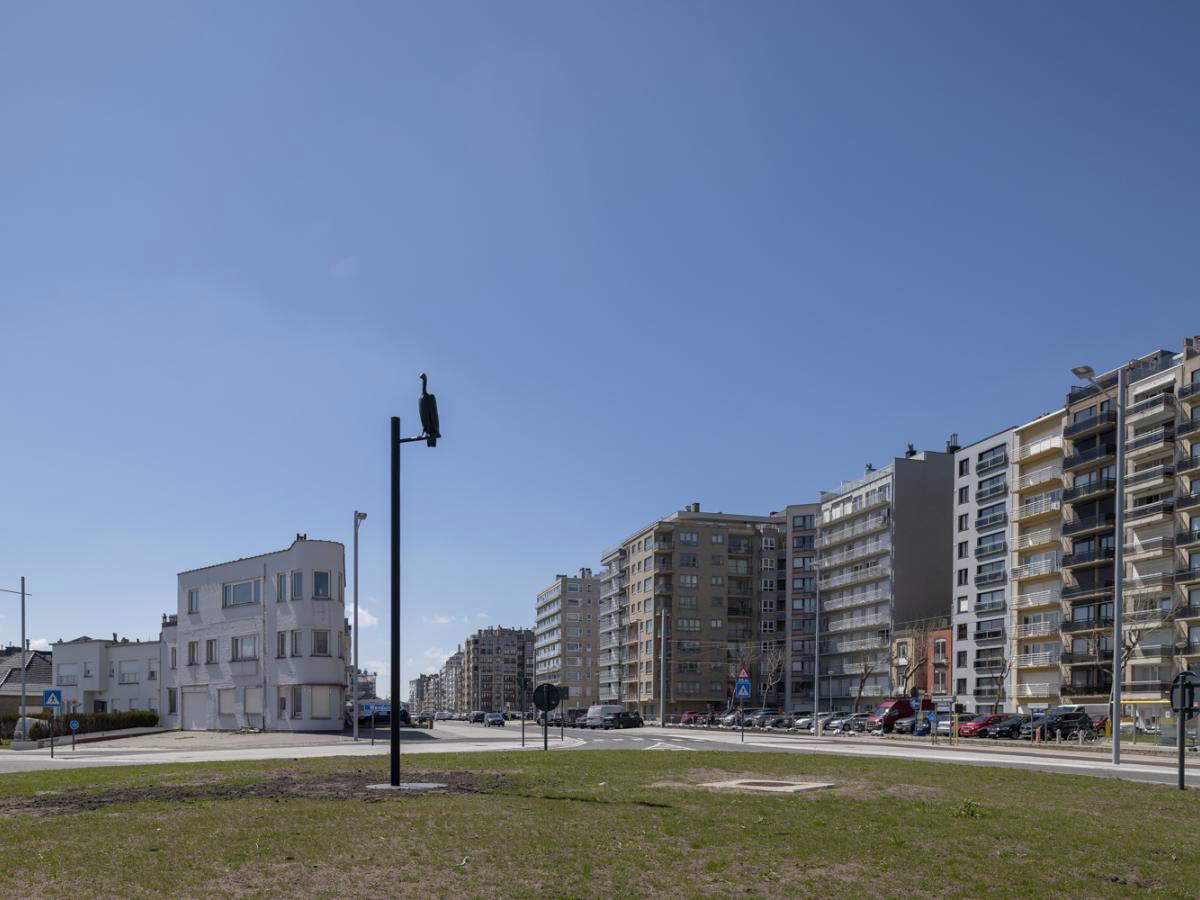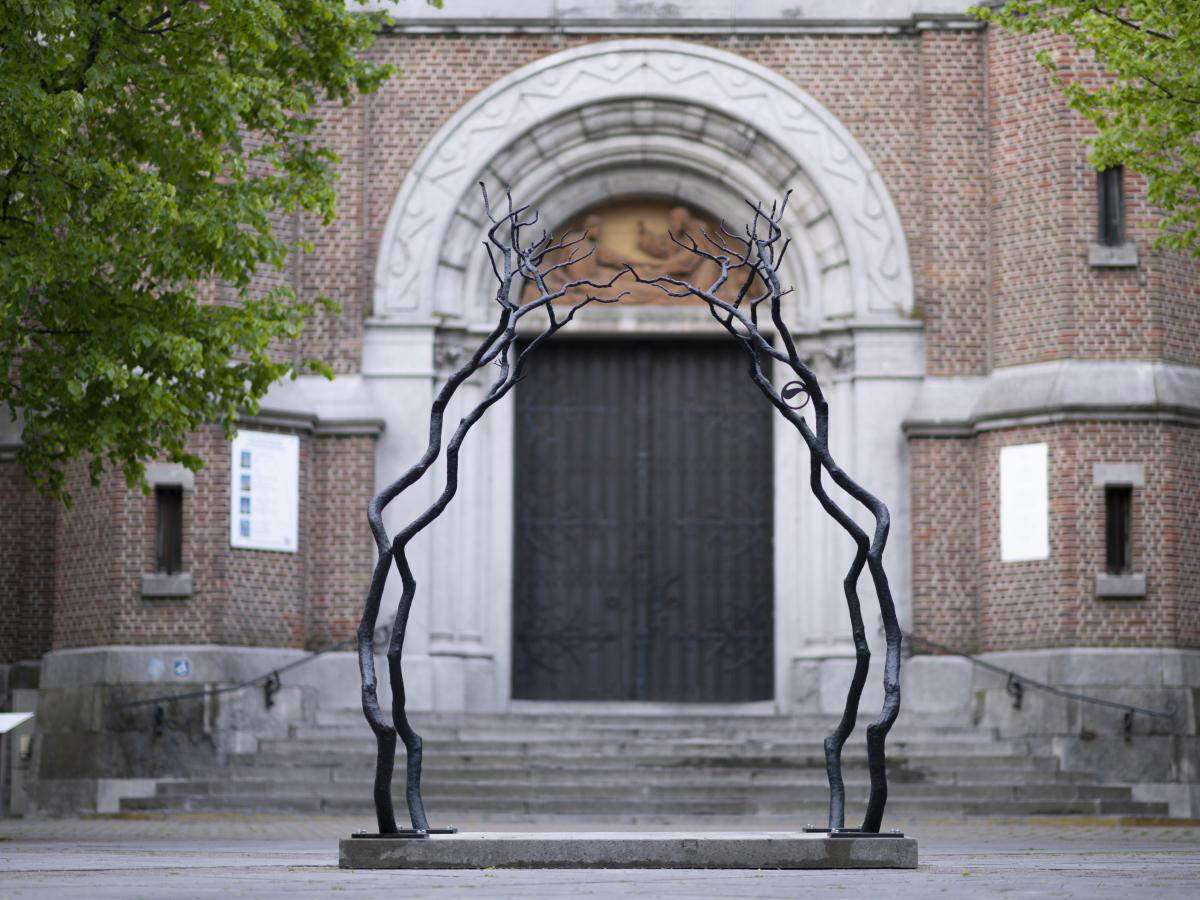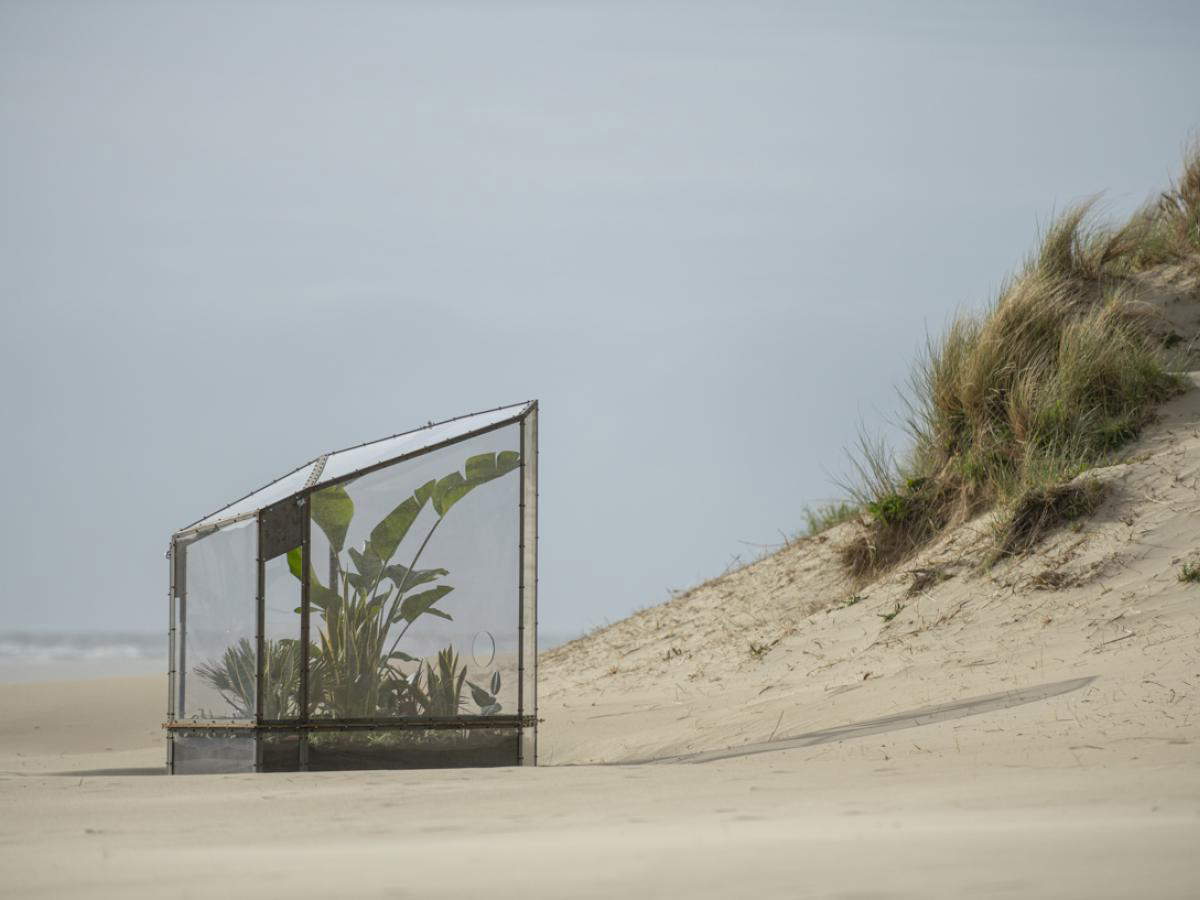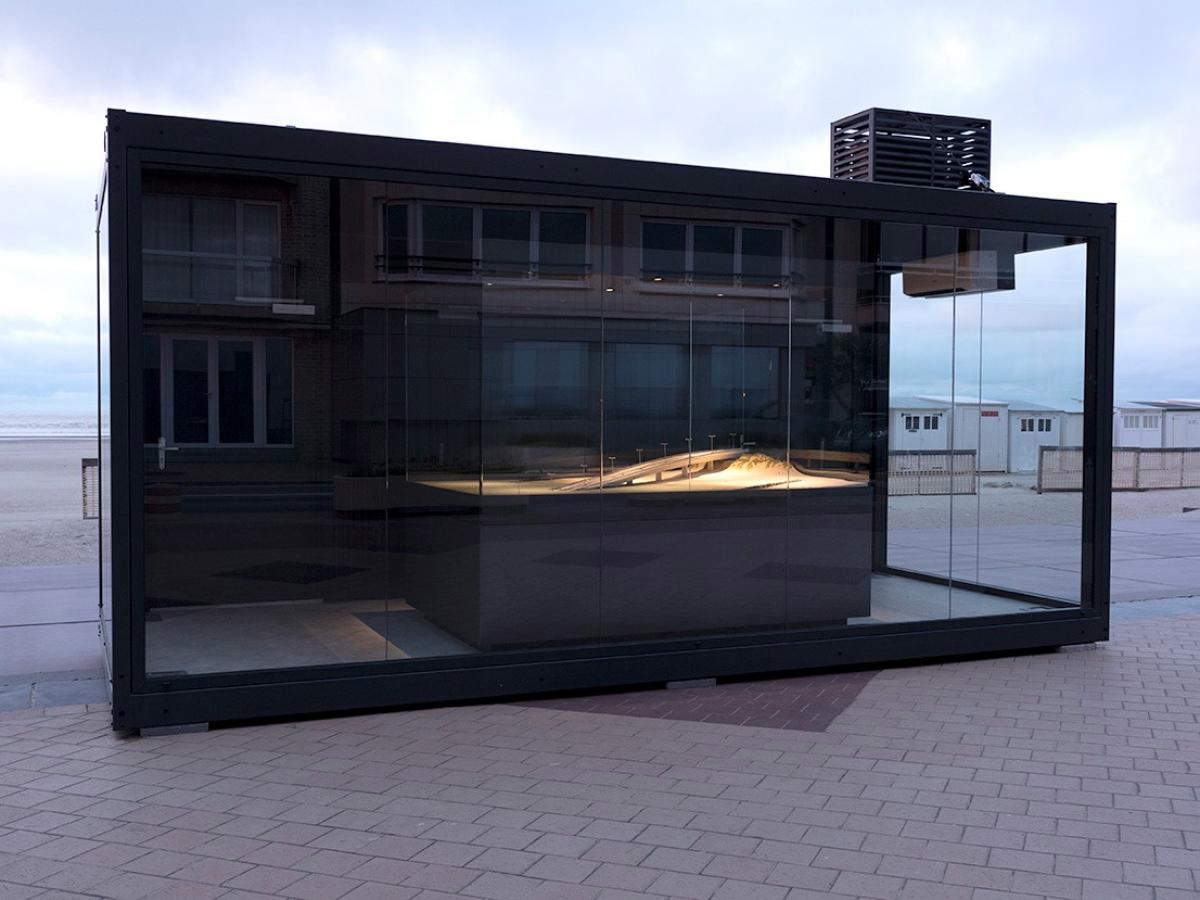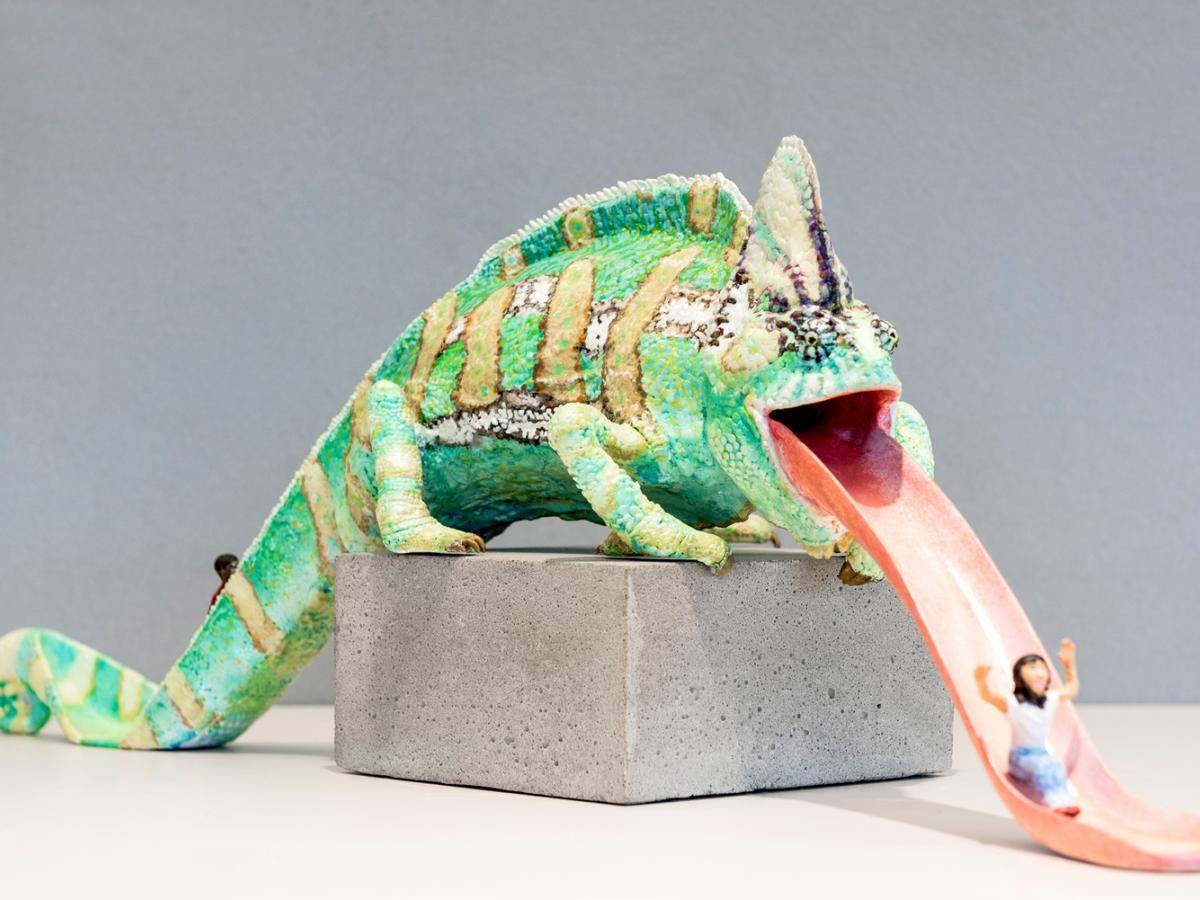by Redazione , published on 10/07/2021
Categories: Exhibitions
/ Disclaimer
Through Nov. 7, the coast of Belgium is being invaded by sculptures and installations from the seventh Beaufort Triennial, which is being held in maritime cities across the country.
Until Nov. 7, Belgium ’s coastal towns host the traditional Beaufort Triennial, now in its seventh year. Curated, as in 2018, by Heidi Ballet, the exhibition features the spectacular installations of 20 major international artists placed on the beaches and waterfronts of the ten coastal cities of Flanders (De Panne, Koksijde, Neuwpoort, Middelkerke, Ostend, Bredene, De Haan, Blankenberge, Zeebrugge, Knokke-Heist). This year’s theme is the subjugation of human beings to the will of nature-a topic particularly felt when observing the sea, since, in the face of its rising level, the relationship between human beings and nature is expressed with great clarity.
So while observing the skyscrapers along the coast one wonders how humans have changed the coastal landscape, the Beaufort Triennial reverses the roles, and the question becomes, “how has the coast changed human history?” At Beaufort 21 (this is the official title of the exhibition), artworks enter into dialogue with their environment and look in new ways at familiar places, with natural history in the foreground. The history of the entire region, after all, is closely intertwined with the North Sea. For example, the tide is present in the very name “Vlaanderen” (“Flanders” in Flemish), derived from the Germanic “flaumaz,” meaning “inundation” because between the 3rd and 8th centuries the Flemish coast was inundated twice a day. The bilingual county of Flanders thus received its name from the perspective of the sea. Moreover, the development of Bruges and then Antwerp was mainly due to maritime trade. From Norway, the Baltic countries, or Italy, the North Sea brought to Flanders not only knowledge and prosperity, but also Renaissance art forms that Flemish artists then further developed.
At the same time, the North Sea is one of the most unpredictable seas in the world. It developed “only” 8,000 years ago, after the Doggerland river landscape was inundated by a tsunami. Its capricious character is all in the name of the city of Ostend (literally “eastern end,” of the Testerep Peninsula, which in the 14th century was partially swallowed by the sea during a major storm). In keeping with this focus, during Beaufort 21 the public space is expanded to include the seabed. Remnants of ships sunk to the bottom of the sea during storms and wars have recently received greater recognition as part of the national cultural heritage. By analogy with heroic war memorials on land, these wrecks form new underwater memorials that tell different stories of humanity on the coast. They reveal elements of our history that generally receive little attention and facilitate a more accurate and complete narrative. Just think of the site known as The Horse Market, an underwater munitions dump from World War I that poses a threat to the area’s ecosystem and shows parallels to the darkest moments of colonial history. The exhibition also strives to cast a deeper look at history as well: according to the curator, our view of the past is pervaded by one-sided concepts and outdated ideas. For quite some time, many voices have been missing in our relationship with history, and one of the goals of Beaufort 21 is to make the erased voices heard, turning attention to all that lives, and within a growing awareness of the vulnerability of humans in the ecosystem. Beaufort 21’s sculptures thus also constitute memorials of a different kind, more suited to the current era.
In De Panne are the works Cast Awat by Michael Rakowitz (Long Island, 1973) and Touching to sea to you through our extremities by Laure Prouvost (Croix, 1978). Rakowitz’s work reenacts Operation Dynamo, or the great evacuation of Allied troops from Dunkirk in May 1940 after an attack by the German army, while Prouvost created a large octopus making its way through the sands of De Panne beach as a symbol of a shipwrecked animal on the coast that has to make its way through different cultures and forms of communication, cautiously exploring the new environment. Koksijde presents the works White Dwarfs and Supergiants by Heidi Voet (Herentals, 1972) and Windswept by Els Dietvorst (Kapellen, 1964), both Belgian artists: Voet, in the dunes of Koksijde, has placed several colored concrete balls (golf balls and beach volleyballs, as symbols of social groups: businessmen and children playing on the beach), which can be seen from two different points of view, up close or from a distance (and in the latter case they become a kind of constellation that make the limits of human beings perceptible), while Dietvorst’s work is a tree bent by the wind (made of bronze from a wooden model), a symbol of vulnerability. In Neuwpoort, however, are Pinpointing Progress by Maarten Vanden Eynde (Leuven, 1977) and Family Module by Goshka Macuga (Warsaw, 1967): Vanden Eynde’s work consists of a number of superimposed means of locomotion intended to recall the history of progress, while Polish artist Macuga reproduces in sculptural form a 1968 performance by Argentine artist Oscar Bony, La Familia Obrero (“The Worker’s Family”) as a symbol of working-class struggles, revisited, however, by Macuga as an allegory for LGBT rights struggles.
On the Middelkerke coast, the audience encounters There Are Indeed Medium-Sized Narratives by Raphaela Vogel (Nuremberg, 1988) and Metamorphosis by Oliver Laric (Innsbruck, 1981). In Vogel’s work, which is meant to be a response to the grand narratives of celebratory monuments, two giraffes stand on top of two refrigerators used as pedestals and holding the title of the work in their mouths, and in Laric’s we witness a metamorphosis of a frog into a table. Ostend hosts Pillage of the Sea by the Italian-German Rosa Barba (Agrigento, 1972) and Cracks & Crumbles by the Belgian collective Monokino: Barba brings to Beaufort 21 a stack of sandbags reproduced in concrete to create a kind of imaginary barrier against the rising sea, and Monokino instead screens a film that questions what elements define our colonial image today. In Bredene, we look at Stranded by Rossella Biscotti (Molfetta, 1978) and Unstable Territories by Nicolás Lamas (Lima, 1980): Biscotti’s work, initially exhibited on the beach and then brought to the Staf Versluys Center after being damaged, is a reflective element, of the kind frequently found along beaches (an oil slick, a beached jellyfish, a pool of water), that becomes a metaphor for the transformations and changes of matter. Lamas’ is a kind of inverted map where the full space is the seas and the negative is the landmasses, to reverse our perspective as human beings.
We come to De Haan, where we find Thinking of you by Jimmie Durham (Houston, 1940) and Benjamin by Maen Florin (Kleine-Brogel, 1954): Durham’s sculpture is a vulture perched on a lamppost looking at the traffic around him, and Florin’s represents a bizarre fairy tale character reflecting on the conditions of childhood. Blankenberge, on the other hand, welcomes The Dancer V, A marine mammal invoking higher spirits by Marguerite Humeau (Cholet, 1986) and Forgiving Change by Timur Si-Qin (Berlin, 1984): the French artist depicts a strange marine mammal, a hybrid of animal and human being, engaged in a ritual dance under the moon, while the German-Mongolian addresses the theme of relationships between humans. In Zeebrugge they meet ... and those North Sea waves whispering sunken stories by Sammy Baloji (Lubumbashi, 1978) and From the series Brick Farm by Adrián Villar Rojas (Rosario, 1980): the Congolese man’s work speaks of what his land had to endure during Belgium’s colonial invasion (the installation refers to the raw materials the Belgians sought in Congo), while Villar Rojas created nests of reddish baker’s nests, a typical South American bird known as “hornero” (i.e., “baker”) in Argentina, the artist’s country of origin, and known for its nests resembling the ovens of the continent’s ancient peoples. Finally, Knokke-Heist proposes Dive, een voorstel by Ruben Bellinkx (Wilrijk, 1975) and Ask the Animals, and they will teach you by Jeremy Deller (London, 1966): Bellinkx reproduces a highway track as a symbol of progress on the one hand and pollution on the other, while Deller’s work is a large chameleon-slide for children that aims to propose an alternative formula to the tradition of large monuments that are generally serious, refer to historical events or are imbued with heroism. In contrast, Deller pays tribute to one of the oldest creatures on earth, and does so in a playful form.
For all information about the exhibition and to read detailed explanations of all the works, you can go to the Beaufort 21 website. Below are all the works in the exhibition.
 |
| Michael Rakowitz, Cast Away |
 |
| Laure Prouvost, Touching to sea to you through our extremities |
 |
| Heidi Voet, White Dwarfs and Supergiants |
 |
| Els Dietvorst, Windswept |
 |
| Maarten Vanden Eynde, Pinpointing Progress |
 |
| Goshka Macuga, Family Module |
 |
| Raphaela Vogel, There Are Indeed Medium-Sized Narratives |
 |
| Oliver Laric, Metamorphosis |
 |
| Rosa Barba, Pillage of the Sea |
 |
| Monokino, Cracks and Crumbles |
 |
| Rossella Biscotti, Stranded |
 |
| Nicolás Lamas, Unstable Territories |
 |
| Jimmie Durham, Thinking of you |
 |
| Maen Florin, Benjamin |
 |
| Marguerite Humeau, The Dancer V, A marine mammal invoking higher spirits |
 |
| Timur Si-Qin, Forgiving Change |
 |
| Adrián Villar Rojas, From the series Brick Farm |
 |
| Sammi Baloji, ... and those North Sea waves whispering sunken stories |
 |
| Ruben Bellinkx, Dive, een voorstel |
 |
| Jeremy Deller, Ask the Animals, and they will teach you |
 |
| Seventh Beaufort Triennial: spectacular works invade Belgian coastline |
Warning: the translation into English of the original Italian article was created using automatic tools.
We undertake to review all articles, but we do not guarantee the total absence of inaccuracies in the translation due to the program. You can
find the original by clicking on the ITA button. If you find any mistake,please contact us.
